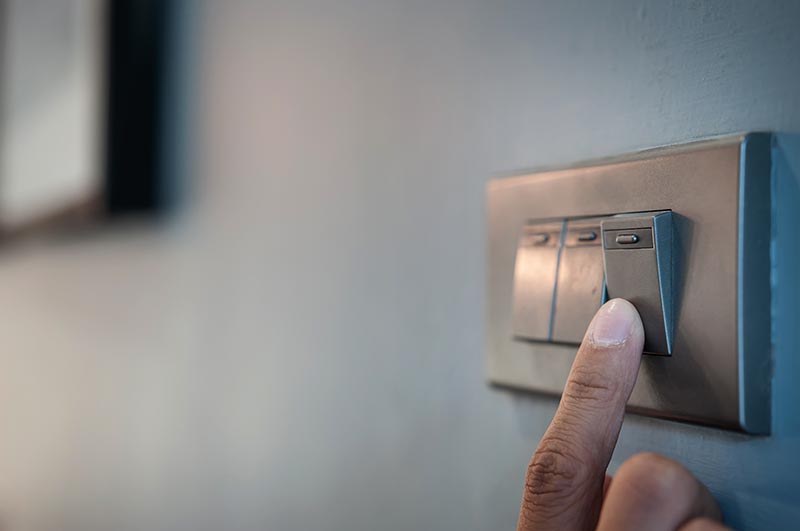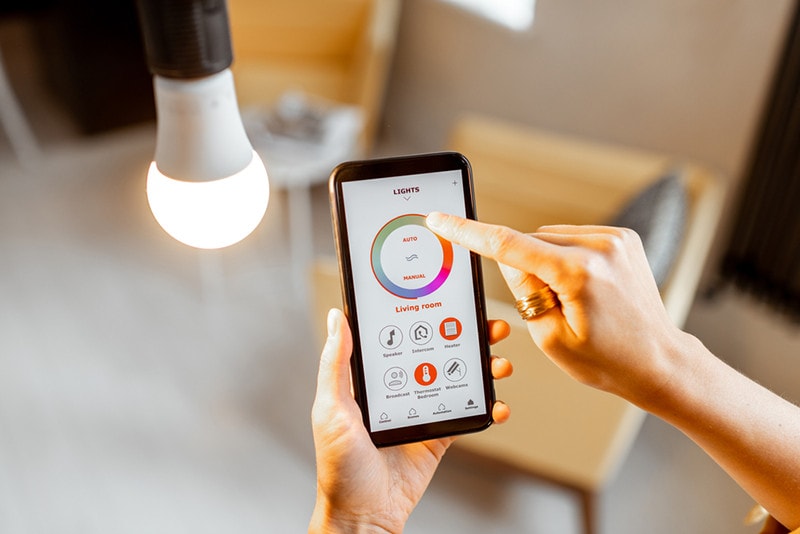How Does a 3-Way Switch Work? Types & Wiring Tips
-
Pete Ortiz
- Last updated:

The invention and commercialization of electricity opened a large door for new appliances. One of them is a switch. Thomas Edison is credited for inventing the switch, which is unsurprising because he could not have operated bulbs (also his invention) and electricity generators without it.
Edison’s switch was a simple connection that allowed current to pass to the bulb when manipulated in a certain way. Though many doubted if Edison was the actual inventor of the light switch because other engineers like John Henry Holmes have proclaimed the same title, what is unquestionable is it was the predecessor of what we have today.
Modern switches are complex, durable, and safe and have evolved into different types, from one-way switches to 3-way switches. Let us find out how the 3-way switch works.
How Does a 3-Way Switch Work?
A 3-way switch allows you to turn on or off appliances, especially light bulbs, at two different locations. For example, if your home has a long hallway, an electrician can install 3-way switches on both ends. As you enter the hallway, you will flip one of the switches. This will light the bulb. Once you are on the other side, you will meet another switch which you will also flip to turn off the same bulb.
The unique switch is designed and assembled differently from the common ON/OFF switch. First, it has no ON/OFF markings because it has no true ON/OFF positions. The bulb will light when both toggles are facing upward or downward and turn off when one of them is facing the opposite side.
As you might be aware, the ground screw is connected to a copper ground wire, and depending on the wiring system, it can be insulated or uninsulated. Insulated ground wires have a yellow or green PVC sheath.
The remaining three screws are part of the power delivery circuit. To understand their respective roles, we will assume that we have a pair of 3-way switches connected to a single bulb. The switch that is closest to the power source will be denoted as switch 1 while the other as switch 2.
Electrical current will travel from the power source and arrive on a dark-colored common terminal on the left side of switch 1. If the switch is facing downwards, the current will travel to the right brass screw through an invisible connector. The brass traveler screw will then allow the current to flow to the right traveler screw on switch 2. If the second switch is facing upward, the current will stop, having nowhere to go, and the bulb will not light up. But if you flip the switch downwards, the current will travel through the dark-colored common terminal of switch 2 to illuminate the hallway.
Assuming that switch 1 was facing upward, what would happen then? First, the current will arrive on switch 1 at the left dark common screw. But instead of crossing over to the right brass traveling terminal, it will use the left terminal. This is the point where it will leave switch 1 for switch 2. The current will then arrive at switch 2 on the right traveling terminal. If the switch is facing downwards, the current will stop. If you flip the toggle upward, the current will pass through to the common terminal and light up the bulb.

Wiring a 3-Way Switch
What if you were installing the switches and bulbs? How will you know how to wire them? Knowing how the switches work without knowledge of how to install them may not be helpful in real life. Normally, the power source has 3 wires; black (hot), white (neutral), and green/yellow (earthing). Because earthing terminals are clearly visible and distinct from hot and neutral terminals, we are not going to discuss them. So let us focus on the hot and neutral wire.
First, take the black hot wire from the power source and connect it to the black terminal of switch 1. Run another black wire from the left brass traveling terminal of switch 1 to the left brass terminal of switch 2. Hook another black hot wire from on common terminal of switch 2 into the light fitting.
Using a different colored wire, let us say a red wire, connect it from the right brass traveling terminal of switch 1 to the right brass traveling terminal of switch 2.
To complete the set up run a white neutral wire from the power source to the light bulb fitting.
Wiring 3-way switches is a little complicated. But to simplify things, use 3 and 4-sheathed cables. Run a 3-sheathed wire from the power source to switch 1 and a 4-sheathed cable from switch 1 to switch 2. You will also use a 3-sheathed cable from switch 2 to the light bulb.
Note: Do not interchange wires while connecting a 3-way switch. It may result in short circuits or the destruction of electrical appliances. Additionally, only one of the switches may function.
What are the Different Types of 3-Way Switches?
1. Toggle 3-way switches
Toggle switches are electrical switches with a projecting lever. The lever is either pushed upward or downwards to operate the light bulb.
The switches are not only beautiful, but their designs also make them easy to operate. You will use less energy on a toggle switch compared to a flat switch.

2. Backlit 3-way switches
At times, caressing the wall at night to get to a switch is annoying. Fortunately, backlit 3-way switches have a small LED to help you locate them.
In single pole switches, LEDs may come on when you switch off the bulb. This is because there is an inbuilt LED micro switch that works with the main switch. If you switch off the lights, the micro switch turns on, and so does the LED.
However, in 3-way switches, the LED may stay on for the entire life of the switch, only turning off when there is a power outage. Due to the low energy consumed by the LED, you don’t need to worry about energy bills.
3. Smart 3-way switches
These are the latest 3-way switches that do not require physical contact to work. You can operate them from the comfort of your seat using voice control. In fact, some switch manufacturers like TP-Link have integrated software that works with Alexa and Google Assistant in the switch.
A typical smart 3-way switch has a 2.5 GHz Wi-Fi adapter for wireless connection. Speaking of wireless connection, you can control the switch through a phone or tablet using installed apps.
Another obvious benefit of smart 3-way switches is scheduling. Use a timer on the app to select when you want the light to be switched on or off without your presence.
Some brands call the scheduling function “away mode.” It may also randomly switch on and off the light at night when you are away to deter would-be intruders.

Where Are 3-Way Switches Used?
By controlling light fixtures in different locations, 3-way switches have many uses at home, primarily for light fittings. Install the switch on the hallways, basement, and garages to light up the area, or use smart switches to protect your home against burglars while away.
Advantages of 3-Way Switches
Since hallways are not as busy as kitchens or living rooms, installing 3-way switches will save energy. You will light up the bulb as you enter and turn it off on your way out. Using the bulb only when needed saves energy.
It is dangerous to walk up a flight of staircases in total darkness. But with 3-way switches at each end, you will not walk along staircases in darkness. They will illuminate the way.
Disadvantages of 3-Way Switches
3-way switches work in pairs. Thus, you will spend more on buying them compared to a single ON/OFF switch. Furthermore, you will spend more money on extra wires.
It takes time to understand how the switch works and when and where to place which wires during installation. Rather than going through the installation process, many homeowners will hire an electrician to install the switch, which can cost extra money.

Frequently Asked Questions (FAQs)
What is the difference between a 2-way, 3-way, and 4-way switch?
A 2-way switch is a typical single-pole switch with true ON/OFF positions. The switch does not require other switches to work. A 3-way switch on the other hand has three terminals (excluding earthing terminal) and works in pairs.
Lastly, if you want to operate lights from 3 different locations, you will go for a 4-way switch.
Can you pull power from a 3-way switch?
You can’t pull power from a 3-way switch. This is because the switch has a hot wire, but it lacks a neutral wire, and to pull power, you will need both.
Can I use a 3-way switch as a regular switch?
It is possible to use a 3-way switch as a regular switch. But in this case, you will use the three terminals (the common terminal, one traveling terminal, and the earthing terminal.)
Are there 3-way dimmer switches?
The market has standard and smart 3-way dimmer switches. They are great at saving energy while keeping hallways illuminated.
A standard 3-way dimmer switch has two toggles- the ON/OFF toggle and the dimmer knob, toggle, or slider. To dim the power, slide the slider to the appropriate position.
Three-way dimmers can either be electronic, magnetic, or multiple loads. Electronic and magnetic dimmer switches have a step-down transformer, while multiple loads work with different types of light bulbs, such as incandescent, LEDs, and halogen.
Conclusion
A 3-way switch is a unique switch that operates in pairs. The switches are common in hallways and on staircases. To use them, install one switch at each end of the hallway. However, be careful about how you connect the wires. Ensure the block hot wire enters the switch at the common terminal. Also, remember to screw the earthing wire in place for safety.
Featured Image Credit: eggeegg, Shutterstock
Contents


